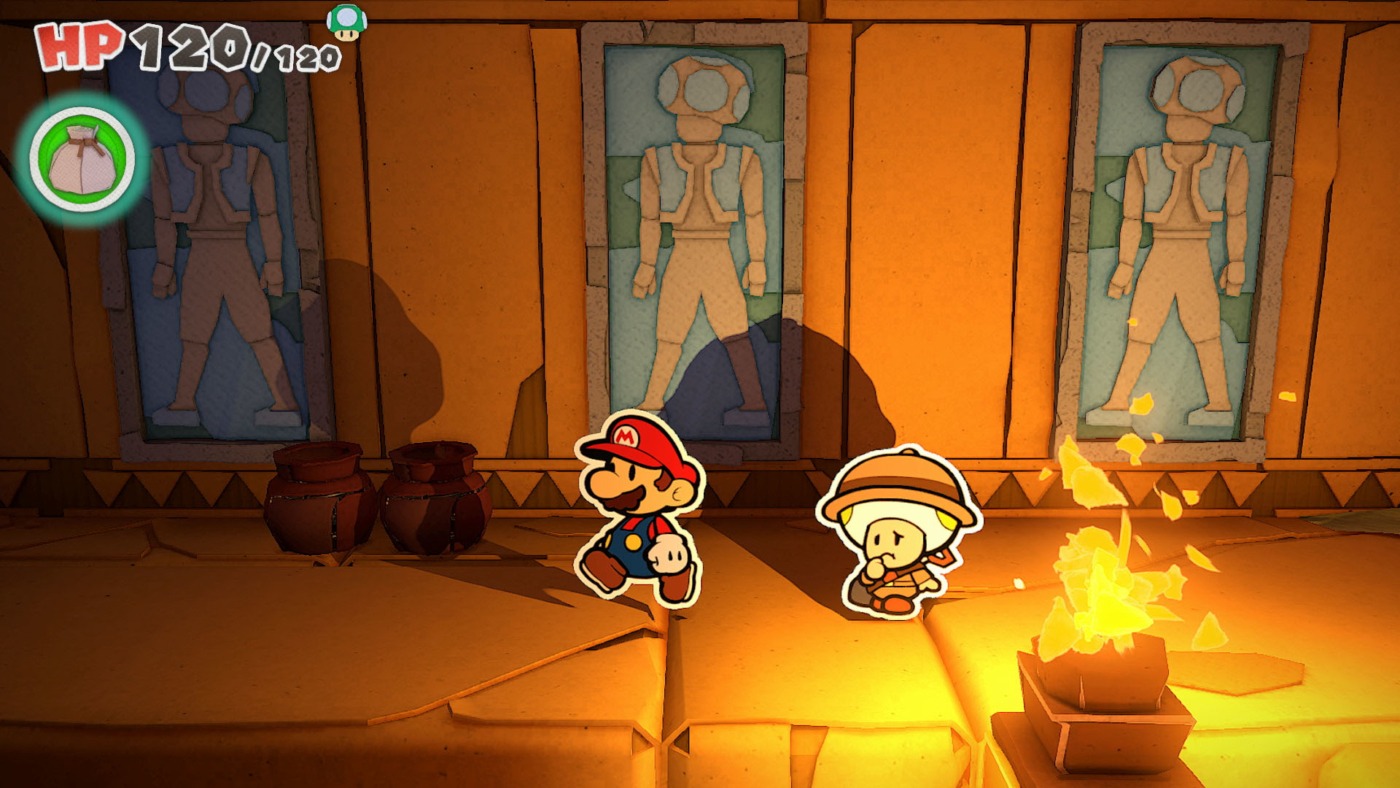The science of Paper Mario and 2D life
There’s a new Paper Mario game on the way and by incorporating origami into its design, our lead character is arguably less flat than ever. As he bridges the gap between 2D and 3D, what better time to reflect on the science of dimensionality? Is Paper Mario as two-dimensional as he appears and if so, what would that mean for his existence?
We don’t need to be told that we live in a 3-dimensional universe (or, as scientists call it, a 3+1 universe, denoting the three dimensions of space and one dimension of time). The contention by researchers is that this basic framework is necessary for the existence of complex life-forms as we understand them, and this is down to variations in the forces of nature. Move to higher dimensions, and gravity starts acting up. Orbits would be unstable against small perturbations from gravity coming from extra dimensions, meaning planets couldn’t orbit stars and solar systems could not exist.
As gravity gets increasingly weaker the more dimensions you add, the only way these dimensions could exist is on very small scales – we’re talking considerably smaller than an atom. The conclusion is that higher dimensions don’t contain any life. But what if we bump the discussion down in dimensions? We know that two dimensions exist, but do they contain life?
Although we imagine Paper Mario as a 2D character, paper is a 3D material, with an average thickness of 0.1mm
There are two main arguments against the idea. Gravity requires the 3+1 universe according to general relativity, so space-time would be unable to curve. Added onto that, scientists believe that the neural networks required for complex brains simply could not form because of the physical limitations of 2D space.
This is where a paper by James Scargill, a physicist at the University of California, Davis, comes into effect. He challenges these two issues and the Anthropic Principle, which basically constrains our ideas of the universe and life by filtering them through humanity. His paper is not proof that 2D life does exist, but rather that it could – that, by altering some supposed rules, it’s entirely possible to construct a 2+1 universe that contains life.
Scargill conjected a different form of the universe. He broke away from a general relativity shape of gravity, instead using a simple scalar field to define it: it’s a field that assigns a scalar value to every point in a certain space. He then demonstrated that certain families of planar graphs can demonstrate the necessary complexity required for a biological neural network to function. In a review of the paper, MIT’s Technology Review concluded that it “gives the lie to claims that a 2+1 universe could not support life”, and that “the cosmologists and philosophers who promote the Anthropic Principle will need to think a little harder”. By simply applying a different framework, Scargill has debunked the major arguments against a 2D universe.
James Scargill’s paper is not proof that 2D life does exist, but rather that it could – that, by altering some supposed rules, it’s entirely possible to construct a 2+1 universe that contains life
Now, I’m writing about dimensionality in relation to the Paper Mario series, but it’s not strictly the most accurate example. Although we imagine Paper Mario as a 2D character, paper is a 3D material, with an average thickness of 0.1mm. The paper world looks flat to our eyes, but this is more of an aesthetic choice. There is a clear third dimension, as paper characters are able to stand behind each other. There is more of this in the spin-off game Paper Jam, in which Paper Mario winds up in the normal Mario world. Our eyes only actually see in 2D because the retina has a 2D surface area with which it detects light and our brains that reconstruct into a 3D image. To see N dimensions, we need an (N-1)-dimensional retina and, as Paper Mario can intuitively conceive of a 3D world, he must consequently be 3D.
We do have a completely 2D character in the Nintendo rostrum in the form of Mr. Game & Watch, a fighter in the Super Smash Bros series. His existence in a 3D world should be problematic, but we again need to shift our understanding: Brawl tells us that, rather than usual matter, the character is made up of a primordial substance with unknown qualities. It’s an easy get-out for some major questions raised by Mr. Game & Watch’s existence, such as the debate around whether a 2D creature has any mass (and, consequently, weight).
Higher and lower dimensions are an interesting contradiction – fairly simple to mathematically construct, but really hard to visualise. But there are a lot of interesting applications to attempting to conceive them, far beyond how imagining the world of a paper plumber and playing with dimensions may help us further understand our universe.

Comments